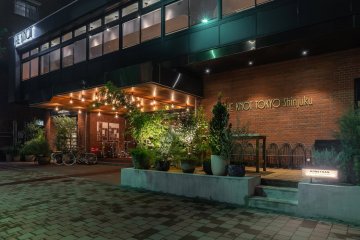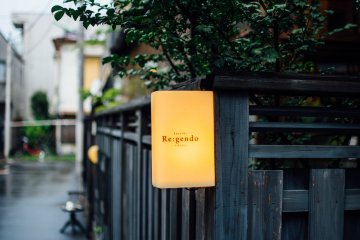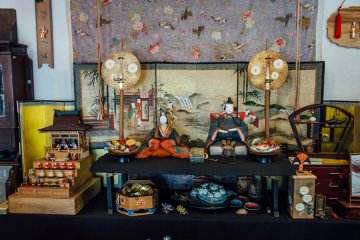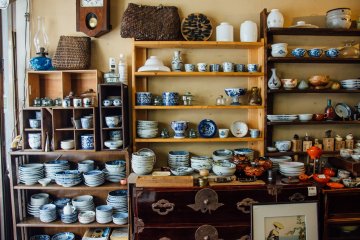Food
Re:gendo is a cafe, apparel and arts and crafts store found in the quaint backstreets of Nishi-Ogikubo, just a few minutes from the station. It embodies everything about Shimane prefecture, capturing the essence of its history, culture and beauty that help inspire everything on offer here.
Located in a spectacular wooden structure, which is said to be around 90 years old, Re:gendo is an homage to Shimane and the staff and owners take great care to display the cultural history of their beloved homeland. It’s a curious space, layed out over two floors. It acts as a thriving restaurant, apparel store, arts and crafts shop and a workshop space which focuses on teaching craftsmanship and culinary skills.
The cafe recognizes the nuances involved in Shimane produce such as rice which it uses for its extremely popular, seasonal lunch menus musubi zen and nigiri zen. Musubi zen consists of a main fish or meat dish while nigiri showcases vegetable nigiri sushi. Both courses come with accompaniments including vegetables, pickles and miso soup. The ingredients at Re:gendo are sourced locally in Toyo or from Shimane. The cafe also does a fine collection of sweets (Shimane folk are particularly fond of wagashi or traditional Japanese confectionery).
The apparel and crafts section, situated on the first floor adjacent to the cafe includes a range of arts and crafts from Shimane and a curated fashion line which uses a type of non-toxic dye from Shimane so it’s safer for pregnant women or customers with allergies. The second floor hosts regular workshops about local craftsmanship and cuisine. Visitors from all over the world come and participate in workshops and learn the intricacies involved in Shimane’s abundance of specialities.
Re:gendo acts, then, as a local hub and a popular attraction for many of Tokyo’s Shimane transplants. Refined, cultured, respectful of ancient traditions and friendly, it should be considered an essential stop on any visit to Nishi-Ogikubo.
Tokyo
1.2km away












/139.6078254,35.7104086,9/397x132?access_token=pk.eyJ1IjoiamFwYW50cmF2ZWxtYXBzIiwiYSI6ImNqbXBtOXYxbDB5Z3ozbHFrazJuYWMwOGYifQ.v15fy_mcFWtgopmz8PhwqA)










